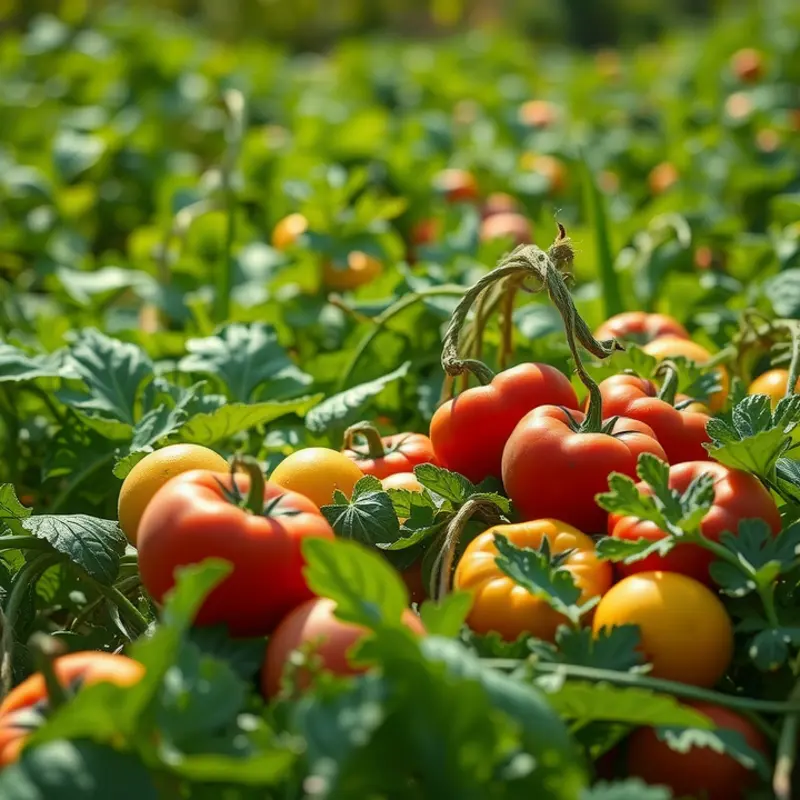Making eco-friendly food choices is more crucial than ever. Individuals can significantly reduce their carbon footprint and promote sustainability through mindful dining strategies. By focusing on local ingredients, plant-based meals, and waste reduction, we can transform our dining habits into powerful tools for environmental stewardship. This guide explores practical and inspiring ways to incorporate eco-aware dining into your lifestyle, empowering you to make a difference with every meal.
Harnessing the Power of Local and Seasonal Produce

Choosing local and seasonal produce is an essential step towards creating a sustainable dining experience. One of the most significant benefits of buying locally sourced foods is the reduction in carbon emissions associated with transportation. Many fruits and vegetables travel thousands of miles before reaching retail shelves. By selecting produce grown in proximity to your home, you diminish the need for lengthy transportation, effectively lowering your carbon footprint.
Moreover, supporting local agriculture helps invigorate your community economically. Farmers’ markets and community-supported agriculture (CSA) programs give farmers the opportunity to sell directly to consumers. This not only increases the freshness and quality of the food but also ensures that farmers receive a fair share of the proceeds, fostering a thriving local economy.
To incorporate more local and seasonal produce into your diet, start by identifying nearby farmers’ markets. Check for markets that operate throughout different seasons, as this will provide fresh produce year-round. A practical approach is to create a market itinerary within your region that includes various locations and days of operation.
Another excellent way to ensure a steady supply of fresh produce is to join a CSA program. These programs allow consumers to purchase a share of a farm’s harvest for a season. This investment not only helps the farmer with upfront costs but also gives you access to seasonal fruits and vegetables as they become available. Many CSAs offer delivery or convenient pickup locations, making it easier to integrate local produce into your routine.
Eating seasonally aligns your diet with the natural growing cycles of your region. Seasonal produce is often more flavorful and nutritious, having ripened naturally. Additionally, seasonal eating promotes a diverse diet as it encourages you to explore a range of fruits and vegetables throughout the year. In winter, root vegetables and hearty greens take center stage, while summer might bring an abundance of berries and tomatoes. Becoming familiar with what’s in season helps cultivate a deeper connection to the food you eat, forging a stronger bond with nature.
For those new to seasonal eating, a great starting point would be to explore easy, plant-based eating. This approach naturally emphasizes local and seasonal ingredients and can simplify meal planning. Visit this guide on easy plant-based eating to explore recipe ideas that highlight the flavors of each season.
Incorporating local and seasonal produce into your diet enhances flavor while being mindful of the earth. By committing to these choices, you contribute to environmental conservation and bolster the local economy. Ultimately, you craft a more meaningful dining experience that respects both community and nature, creating a sustainable future for all.
Embracing Plant-Based Diets for a Greener Planet

Reducing meat consumption can have profound environmental benefits. The production of plant-based foods generally emits fewer greenhouse gases and requires less land and water compared to meat production. By shifting toward a plant-based diet, you can significantly lower your ecological footprint.
Integrating more plant-based meals into your diet doesn’t have to be daunting. Start by exploring meatless Mondays or substituting meat in one to two meals a week with plant proteins. Legumes, such as lentils and chickpeas, are excellent sources of protein and can replace meat in dishes like stews, salads, and even burgers.
Quinoa, farro, and other ancient grains offer robust flavors and nutrition. They can be foundations for wholesome meals. Try making a grain bowl, combining cooked grains with fresh vegetables, a simple dressing, and some nuts or seeds for texture.
Fruits and vegetables should be the stars of your meals. Seasonal produce not only tastes better, but it also supports sustainable agriculture by reducing transportation emissions and boosting local economies. Get creative with vegetables by roasting, grilling, or eating them raw for a variety of textures and flavors.
For delicious, eco-friendly meals, consider easy recipes like a hearty vegetable chili: saute onions, garlic, and mixed vegetables, add canned tomatoes, and any beans you have on hand. Season with cumin and paprika for warmth. Not only is this dish simple, but it’s also nutrient-rich and comforting.
Dive deeper into plant-based cuisine by mixing up ingredients and trying various cuisines from around the globe. For instance, Mediterranean and Asian dishes frequently use plant-based ingredients, offering vibrant and satisfying dishes without relying on animal products. Stir-fried tofu and vegetables with ginger and soy sauce or ratatouille with fresh herbs are exquisite options that delight the palate.
To maintain flavor without adding excess sodium, consider natural flavor enhancers like herbs, spices, and citrus. For tips on enhancing flavors without salt, check out this guide on flavor boosters.
As you shift towards a plant-based diet, it’s essential to ensure nutritional adequacy. Include a variety of foods to obtain all necessary nutrients. Nuts, seeds, and fortified plant-based milks can help meet calcium and omega-3 needs, while whole grains and beans can cover protein and iron requirements.
By embracing a plant-based lifestyle, you contribute to a more sustainable world while enjoying a diverse palette of flavors and textures in your meals. Plant-based eating is not just a trend; it’s a meaningful choice towards a greener planet and personal well-being.
Final words
Making conscious choices about what we eat can lead to a healthier planet. By prioritizing local, seasonal produce and embracing plant-based meals, individuals can significantly reduce their environmental impact. The journey toward eco-aware dining is not just about individual choices; it’s a collective movement toward sustainability that can lead to a positive change in food systems. As you explore these strategies, remember that every meal is an opportunity to nourish both your body and the earth. Together, we can cultivate a more sustainable future through mindful eating.








